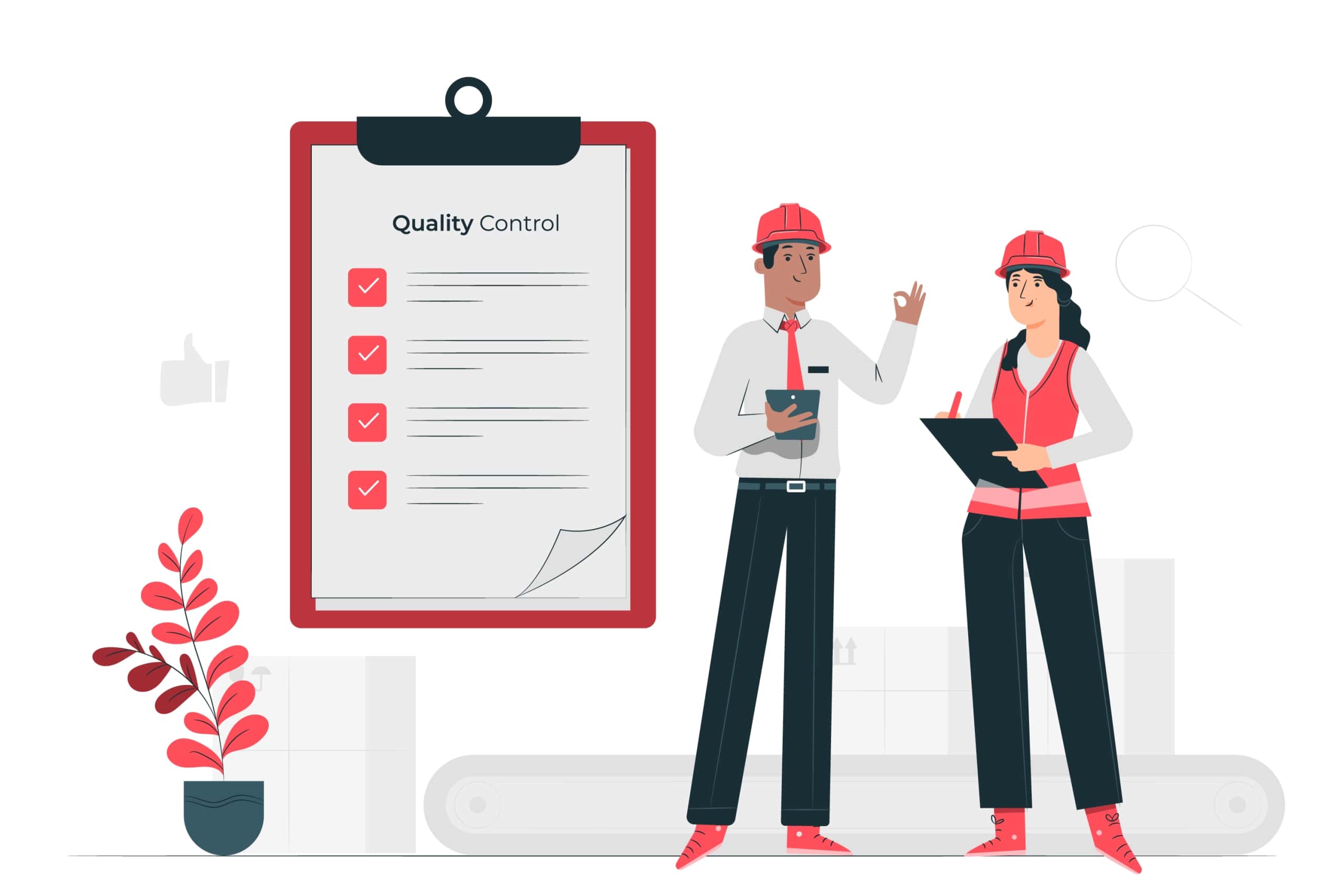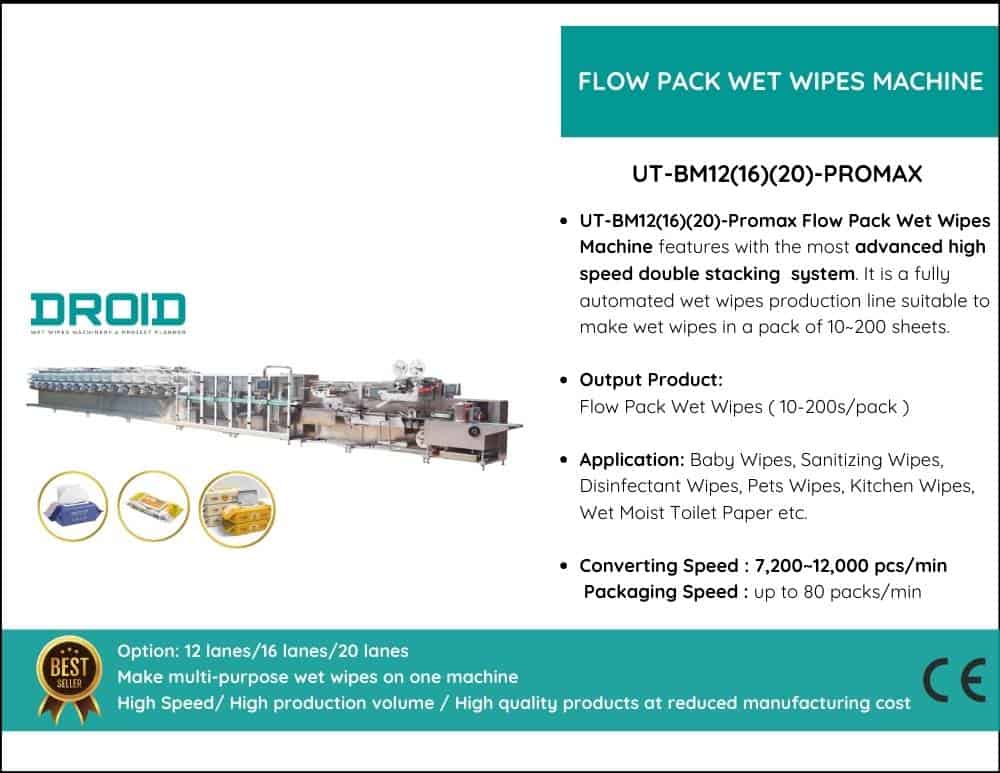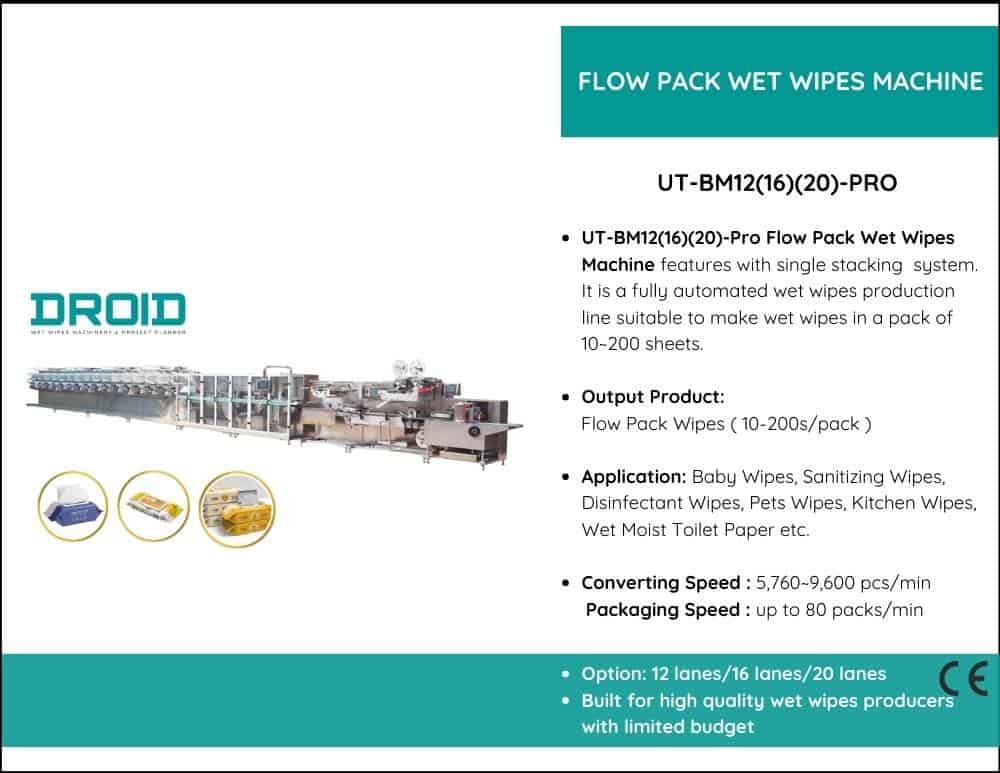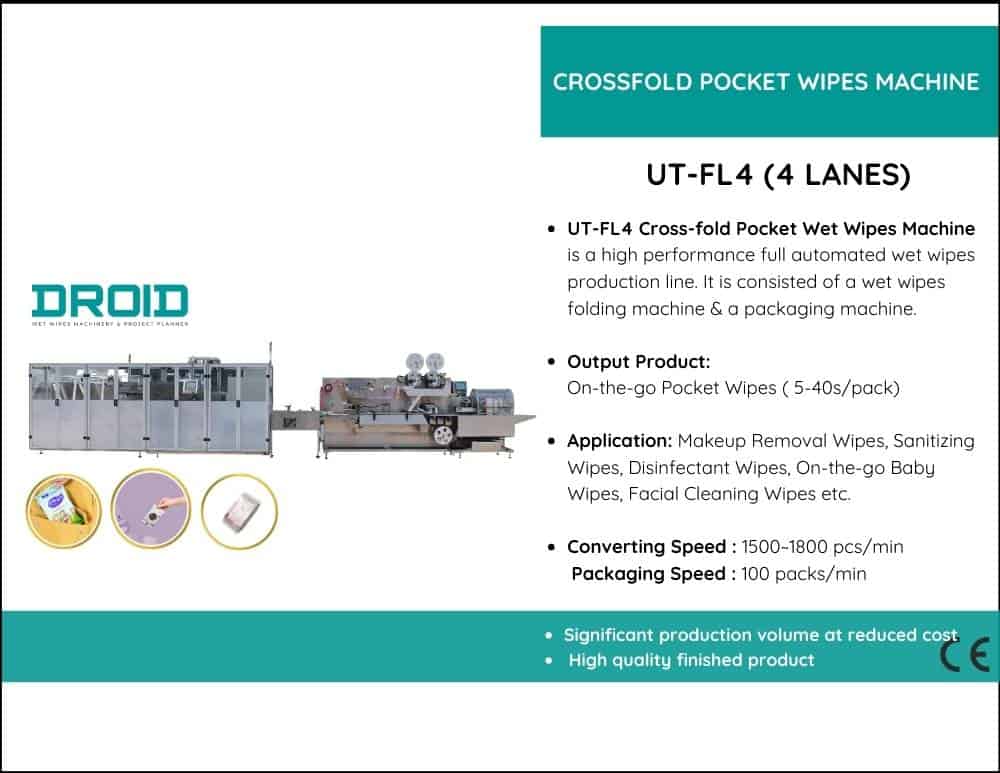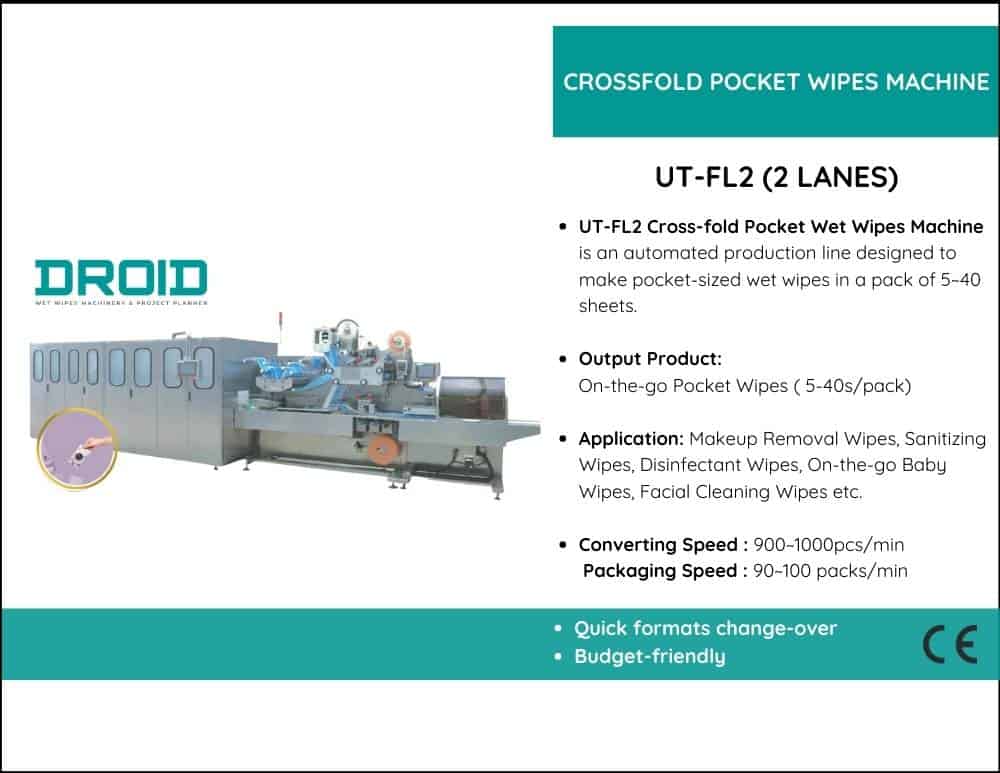The most important statistic for assessing the financial feasibility of your wet wipes machine acquisition is the return on investment or ROI. By weighing the costs and advantages of your investment, it gives you a clear picture of how well it contributes to the profitability of your company. You can plan future investments and make well-informed choices by calculating ROI. This is a comprehensive approach to precisely measuring ROI and comprehending its ramifications:
1. Recognize the ROI Formula
The ROI formula is simple to understand:
(Net Profit / Total Investment) x 100 = ROI (%)
Net Profit: The combination of revenue growth and cost reductions less operating expenses is the overall financial return on your investment.
Total Investment: This sums up all of the expenses for buying, setting up, and caring for the wet wipes machine.
This method makes it simple to compare projects by giving you a percentage that shows the return on your original investment.
2. Compile Important Financial Information
Accurate ROI calculation requires comprehensive financial data:
Initial Investment Costs: These include the cost of buying the equipment, shipping, installation, setup, and training.
Operational Costs: Take into consideration labor, maintenance, and utility costs throughout the assessment period.
Revenue Growth: Calculate the rise in revenues brought about by more manufacturing capacity, better-quality products, or market expansion.
Cost savings: Take into account decreases in labor, energy, raw materials, and downtime.
For precise computations, make sure the data is gathered over a regular period, such as monthly, quarterly, or yearly.
3. Determine Increases in Revenue
One of the most important aspects of ROI is revenue growth. To calculate the financial gains from higher manufacturing capacity, product variety, and premium pricing, use sales data. For instance:
The monthly income boost is $5,000 if your new machine enables you to create 10,000 more units per month for $0.50 each.
This adds up to an extra $60,000 in income over a year.
4. Take Cost Savings into Account
Saving money may have a big influence on your return on investment. Determine the savings in many categories, including:
- Labor: Automation lowers payroll costs by eliminating the need for manual labor.
- Raw Materials: Waste is reduced by increased accuracy.
- Utilities: Water and power costs are reduced with energy-efficient equipment.
- Maintenance: Costs associated with repairs and downtime are decreased by advanced machinery.
The entire financial advantage is calculated by adding these savings to your revenue growth.
5. Take Operational Costs Into Account
Ongoing operating expenses lower the net profit even while revenue growth and cost reductions have a beneficial impact on ROI. Incorporate:
Costs of annual maintenance include routine repairs or replacement components.
- Utility bills: The monthly cost of water and electricity.
- Training Expenses: Operators must get regular instruction on sophisticated machine functions.
To get the net profit, deduct these operating expenses from your overall financial gain.
6. Enter the ROI Formula with the Data
Use the following formula to determine ROI after you have the required data:
For instance:
$50,000 is the first investment cost.
Annual Growth in Revenue: $60,000.
Annual Cost Savings: $10,000
Annual Operational Costs: $5,000
Revenue Growth + Cost Savings – Operational Costs = Net Profit
$60,000 + $10,000 – $5,000 = $65,000 is the net profit.
(Net Profit / Total Investment) x 100 is the ROI.
ROI is 130% ($65,000 / $50,000) × 100.
With a return on investment (ROI) of 130% in this case, the investment has more than doubled in value over the year.
7. Take the Payback Period into Account
The payback time determines the speed at which an investment recoups its expenditures, while ROI gauges total profitability. You may reinvest gains sooner and lower financial risk with a shorter payback time.
Total Investment / Monthly Net Profit = Payback Period
Regarding the aforementioned example:
$50,000 / ($65,000 ÷ 12) ≈ 9.2 months is the payback period.
In less than a year, the machine will have paid for itself.
8. Examine ROI over the Long Run
Although the ROI for the first year is important, take into account the machine’s influence throughout its anticipated lifetime. For five to ten years, a high-quality wet wipes machine may provide reliable results. For instance:
Over five years, the machine’s total net profit might surpass $325,000 (5 × $65,000), resulting in a cumulative return on investment of 650%.
Why ROI Calculation Is ImportantThe
ROI calculation is a tool for assessing the strategic worth of your investment, not merely a numerical exercise. A good ROI demonstrates the machine’s benefits to the expansion of your company and justifies the original investment. You may remain on course, streamline processes, and make well-informed choices about expanding or improving your production capacity by routinely reviewing ROI estimates.



